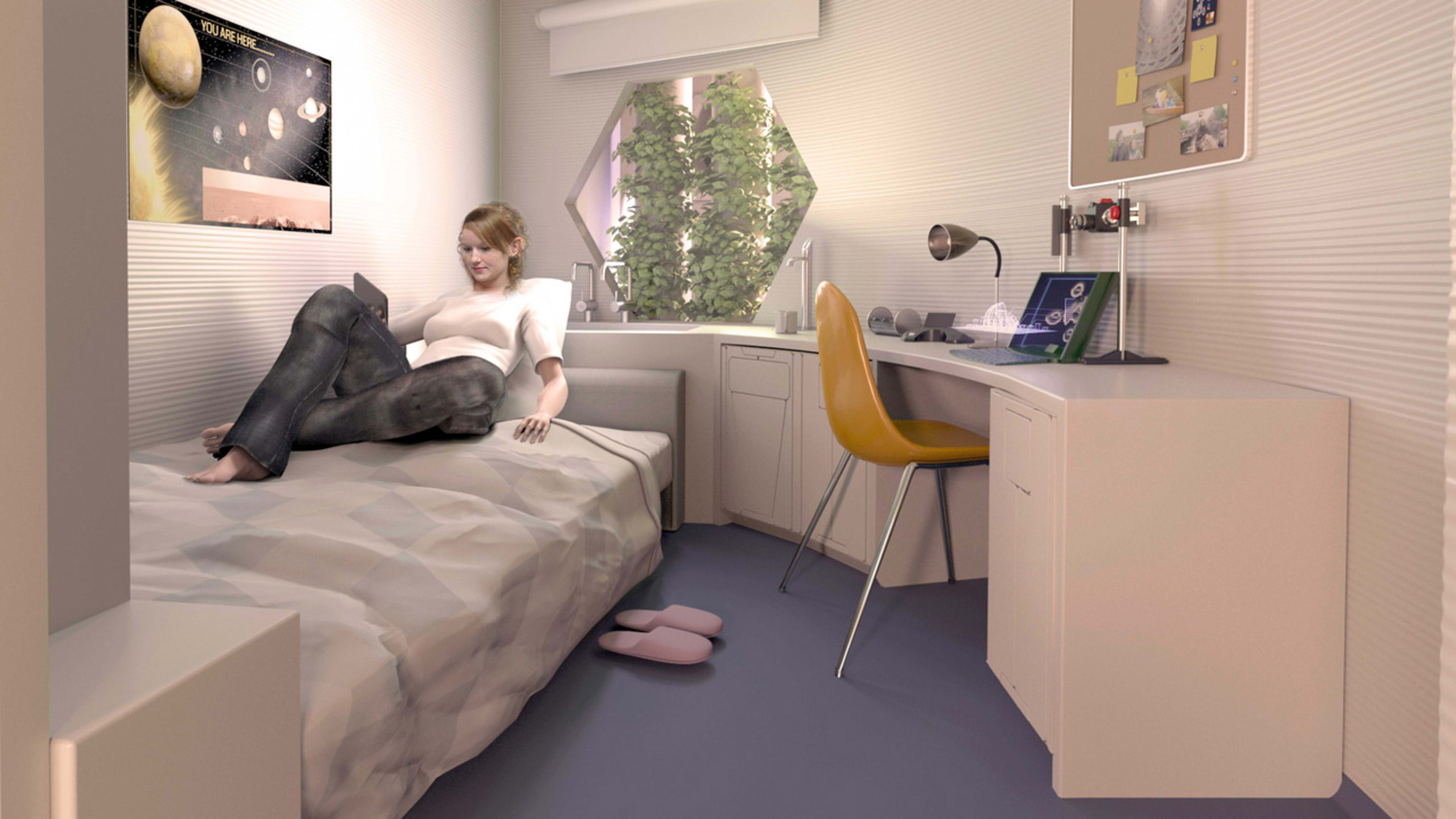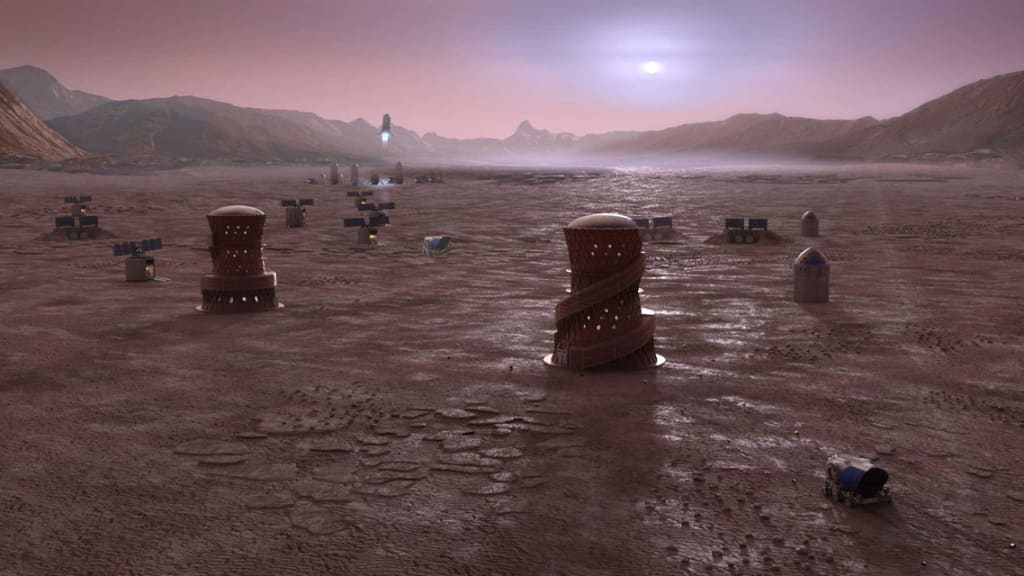Any well-designed home should have lots of natural light and some kind of greenery. While it’s a principle that’s easy to follow on Earth, it’s a much bigger challenge when you start designing homes in outer space.
But the design concept firm Space Exploration Architecture has included these crucial qualities of life in its new concept for NASA’s 3D-Printed Habitat Centennial Challenge, a multistage competition to design a 3D-printed habitat that would provide astronauts with a safe home base on Mars. The firm’s concept, a vertical structure with a curving staircase on the outside called Mars X House, recently came in first place in virtual design in the challenge’s second stage.
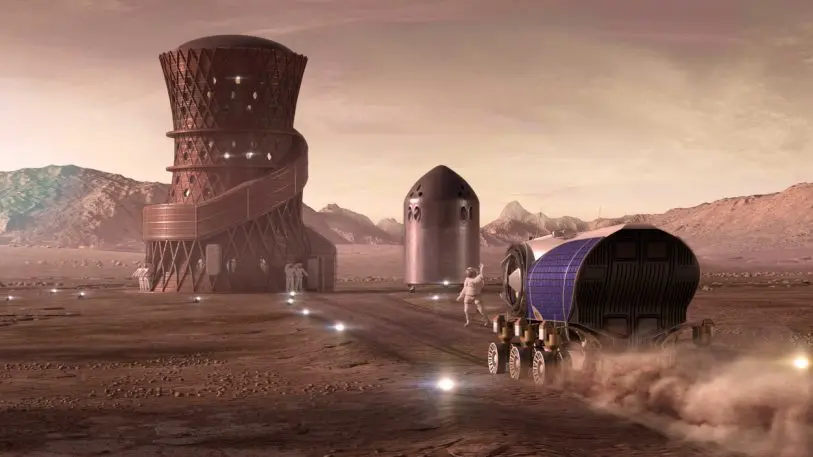
Mars X House’s exterior is dotted with small windows that would give astronauts a connection to the outside world, while providing some small exposure to sunlight to help keep their circadian rhythms on track while in space. Yashar says that windows are an important part of any habitat for safety reasons, so the astronauts can see outside for potential dangers–which is usually the reason they’re included. But for Yashar, it goes further than that. Because a day on Mars is similar in length to a day on Earth, the designers believe that natural light will provide the astronauts living in their habitat an anchor to the natural world. “In all our work, it’s been a driving force that we introduce natural light to astronauts, and we’re ensuring that their experience of the habitat is commensurate with what it would mean to live a thriving life on Earth,” says Melodie Yashar, the cofounder of Space Exploration Architecture.
That also means incorporating greenery. Yashar and her team’s design includes a vertical hydroponic garden that runs up the center of the living space. Garden peepholes in each of the crew’s bunk areas would ideally give the astronauts some of the well-documented benefits of being near plants, including stress reduction and other health benefits. Plus, the hydroponic garden would replenish oxygen in the habitat and double as a viable food source for the crew over time. “In our opinion it introduces long-term sustainability and thriving in an environment that’s extraterrestrial,” Yashar says.
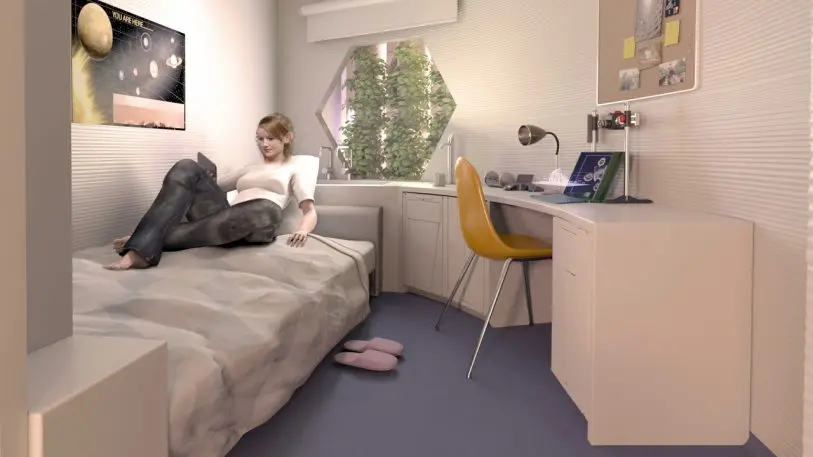
Part of the goal is to make sure that astronauts can enjoy close to the same quality of life they’d have on Earth–but at no point does the design sacrifice safety in service of that idea. The habitat’s primary duty is to protect the astronauts from radiation. To do that, the designers created a multilayer exterior shell that could be 3D printed on the surface of the planet. This shell includes an inner layer of high-density polyethylene, a type of plastic that Yashar says could be created from plastic waste that the astronauts generate on their journey over to Mars. Alternatively, the polymers necessary to create this kind of plastic happen to be a by-product of methane production–Yashar says that scientists recognize that it will be necessary to produce methane on Mars as a means of creating fuel. It’s something Elon Musk has already proposed to do by deriving methane and liquid oxygen from Mars’s carbon dioxide-rich atmosphere and its frozen water reserves.
Yashar theorizes that by the time the structure would be built, NASA will have a way of making methane on Mars and utilizing its by-products to make plastic like the polyethylene. The outer layer of the shell will be 3D printed from Martian rock, called regolith.
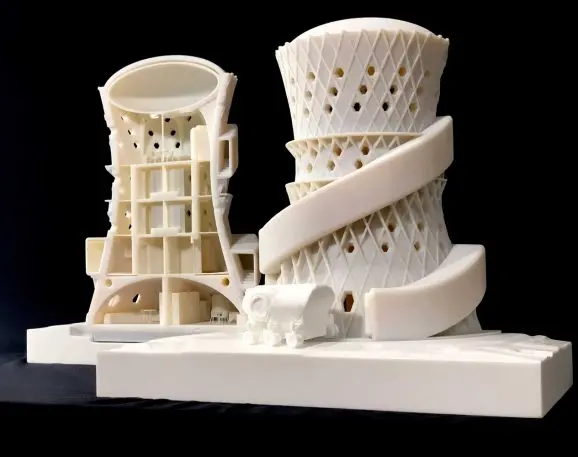
The combination of these two layers will provide far more protection from radiation than NASA’s current standards. Though the windows are weak points when it comes to radiation, Yashar created a double-pane polycarbonate window that only allows light in from just above the horizon–the rest of the window is shielded from radiation by the habitat’s thick walls. Additionally, Yashar designed the structure so that the places where the crew will be spending the most time–the labs and their sleeping areas–are in the core of the Mars X House, creating an even greater buffer from external radiation. If there does happen to be a safety problem, like a foreign contaminant gets loose in one of the labs, each section of the habitat can be quarantined completely to ensure the rest of the structure stays safe. And if an emergency happens on the ground floor and astronauts are trapped on top, there’s a covered staircase tunnel that runs in a spiral around the outside like an extraterrestrial fire escape.
Windows and greenery peepholes. 3D-printed plastic interiors derived from methane. Martian emergency escape hatches. How feasible is this design? According to Yashar, a structure like this is probably 10 years away from actually being built on Mars’s surface. Right now, one of the biggest things holding the team back from making this happen is money–to speed up development, large-scale additive manufacturing projects just need more funding so their viability can be proven. However, Yashar believes that her team won first prize in the competition’s latest stage in part because their idea is 100% constructable (the designers also worked with the 3D-printing company Apis Cor on feasibility).
And the design team is going to have a chance to test it out: In May, Space Exploration Architecture and Apis Cor will be 3D printing a 1:3 scale model entirely autonomously. They’ll be able to provide the mechanical core of the habitat–which would theoretically be shipped to Mars via rocket–but the rest of the design will have to be put into place using only robots.
Yashar says there are likely to be more steps to the competition after that, though NASA has yet to announce them. But the ultimate goal is to prove viability and introduce the public to the science NASA is working on. Other Mars habitat concepts have focused on inflatable structures and even growing entire Martian buildings out of fungus. For now though, NASA is focusing on 3D printing.
“I do think 3D printing allows for most versatility in creating structures not only for living but also for roads and infrastructure for a future colony,” Yashar says. “There’s a lot of potential there. It’s really just about taking baby steps.”
Recognize your brand’s excellence by applying to this year’s Brands That Matter Awards before the early-rate deadline, May 3.
